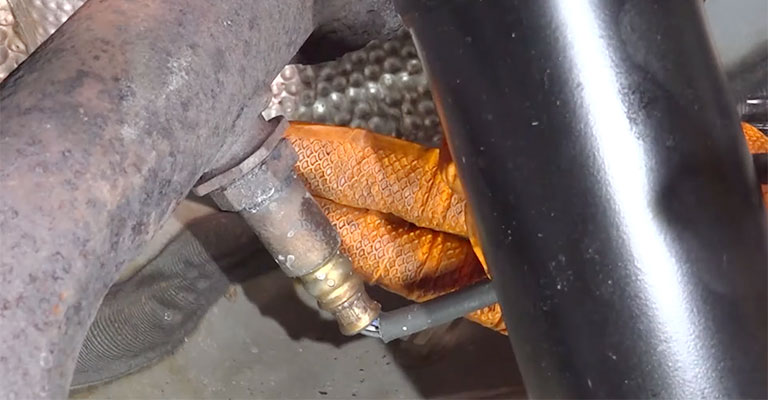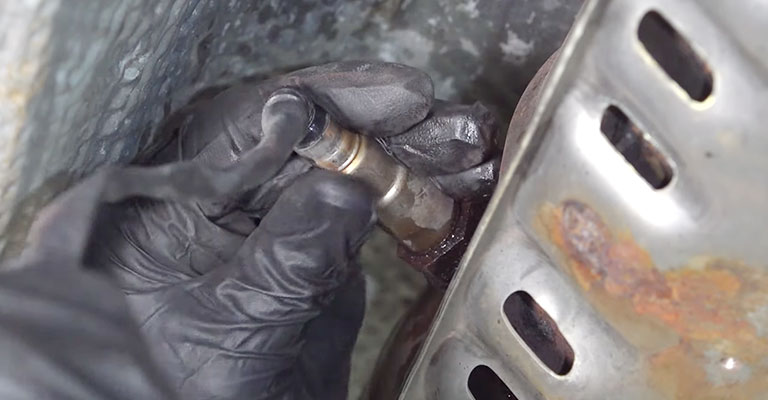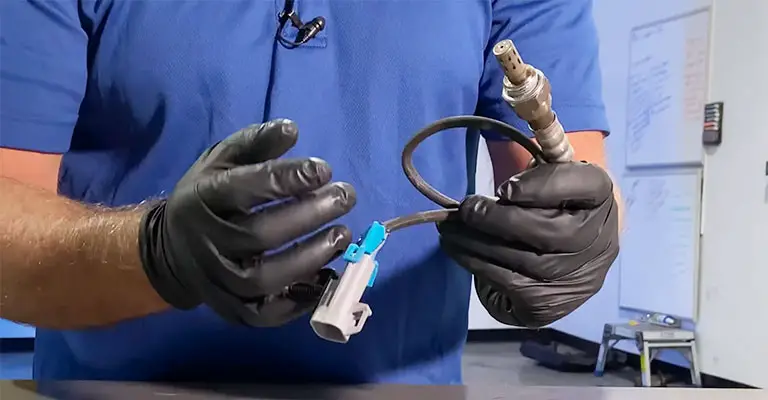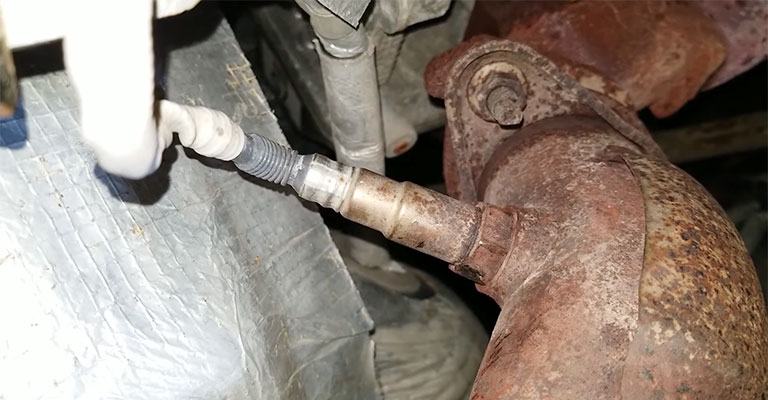A new O2 sensor will improve performance only if the previous one was faulty. If there is no issue with the current O2 sensor, there is no need to replace it.
Replacing the old and defective O2 sensor is not that complicated. However, identifying and knowing when to replace it is challenging. Hence, his article is here to help you along the way.

Will a New O2 Sensor Improve Performance?
Oxygen sensors allow the engine computer to adjust the air-to-fuel ratio. The information is sent by the fuel and emissions system as they monitor the amount of oxygen gas in the exhaust. This is exactly why it is a vital component of a car’s engine system.
In the case of failure of the sensor, the engine computer will operate incorrectly and set the wrong air-to-fuel ratio. As the sensor deals with adjusting the fuel-air mixture delivered to your cylinders, a sensor failure won’t develop full power in the engine.
This will result in a lower fuel economy, overheating of the catalytic converter, and high emissions. It is one of those instances you might feel like you need to replace the O2 sensor to improve performance.
However, whether you should replace it or not depends entirely on the status of your existing oxygen sensor. If it is doing what it is supposed to do, then it does not need to be changed.
Although, if the previous one was faulty and had issues, then you need to replace it with a new one. But before that, you need to know how an oxygen sensor works and the signs of a bad sensor to identify one.
How does an O2 Sensor work?

As stated before, O2 sensors are important in the way that they monitor the presence of unburned oxygen in the exhaust. They monitor the oxygen level and provide a means to measure the fuel mixture.
Such sensors are mounted in the exhaust stream of the vehicle. A specialized computer known as the “Engine Control Module (ECU)” determines whether the fuel mixture is burning rich or lean by assessing the information sent by the sensor.
You will pass your car’s emission test easily if you have a properly functioning O2 sensor. Not to mention, it also ensures the car’s fuel efficiency. Newer models of cars these days have multiple sensors to provide more readings to the ECU.
Signs of a Bad O2 Sensor
A reassuring fact about O2 sensors is that they do not need to be replaced regularly like oil and air filters. You are supposed to replace them only when they fail. However, there are some typical signs of a bad O2 sensor.
One of the serious signs is an illuminated check engine light. Other signs include misfiring spark plugs, a huge increase in fuel consumption, a rough idle, a lack of power, etc. Although these symptoms could indicate some other problems, replacing the O2 sensor in such cases can improve fuel economy by 40 percent.
Do Oxygen Sensors Affect Performance

A malfunctioning oxygen sensor does affect your car’s engine performance. In general, O2 sensors are mounted in the exhaust of the vehicle to measure the oxygen content present. If there is a problem with the sensor, you will notice several aftereffects.
Some of the problems include black vehicle exhaust, dashboard warnings, high emission levels, fuel economy loss, etc. Also if you notice a smell like rotten eggs, there is a possibility that the oxygen sensor has caused the failure of the catalytic converter.
How Long Does It Take a New O2 Sensor to Work?
Replacing an O2 sensor and getting to work entirely depends on how busy the mechanic is that day. The experience of the mechanic also plays a role here. Although typically, a skilled mechanic should take just about 30 minutes to replace an O2 sensor.
However, the average timespan for replacing an O2 sensor is about 20 to 40 minutes. If the technician is inexperienced, it might take a full hour. Although, finishing the job in half an hour won’t prevent the mechanic to charge you for a full hour of labor.
What to Do After Replacing Oxygen Sensor?

Once you have replaced the O2 sensor of your vehicle, you will need to reset the Engine Control Module or ECU. That way it will collect information from the new O2 sensor properly. To do that, first, you have to open the fuse panel by pulling it down.
Furthermore, you have to locate the fuse for the ECU by making use of the fuse diagram. Pull that fuss using the fuse pullers in the fuse panel. Then turn the ignition to the “On” position and wait for five minutes. Lastly, reinsert the fuse. If the “Check Engine” light blinks and then shuts off, it means that ECU has been successfully reset.
Frequently Asked Questions
- Can You Drive with A Bad Oxygen Sensor?
Yes, you can drive with a bad oxygen sensor. But the conditions are that you should be able to start your engine and feel little difficulty driving. However, you should not ignore this issue for over a couple of days because it might lead to the malfunction of other parts of your vehicle.
- Should you replace all O2 sensors at the same time?
The best practice is to replace O2 sensors in pairs. For instance, replacing the downstream left sensor will also require you to replace the downstream right sensor.
- How much does a new O2 sensor cost?
A new oxygen sensor can cost from less than $100 to $300 or more. The price varies with different models. However, this pricing excludes labor. The full cost of an oxygen sensor including the labor and the installation varies according to the type of vehicle you own.
Conclusion
When your car is feeling down on the weather or not performing well, you might want to do a quick check on the O2 sensors. You cannot afford to leave the defective O2 sensors for too long as this will potentially damage other parts of the vehicle’s engine as time passes. Therefore, monitoring the vehicle and knowing when to replace the O2 sensor is crucial.
Leave a Reply